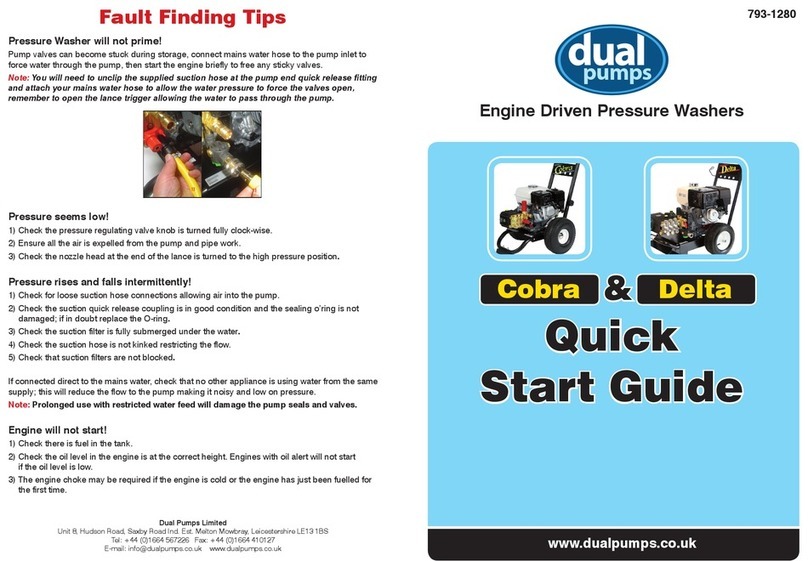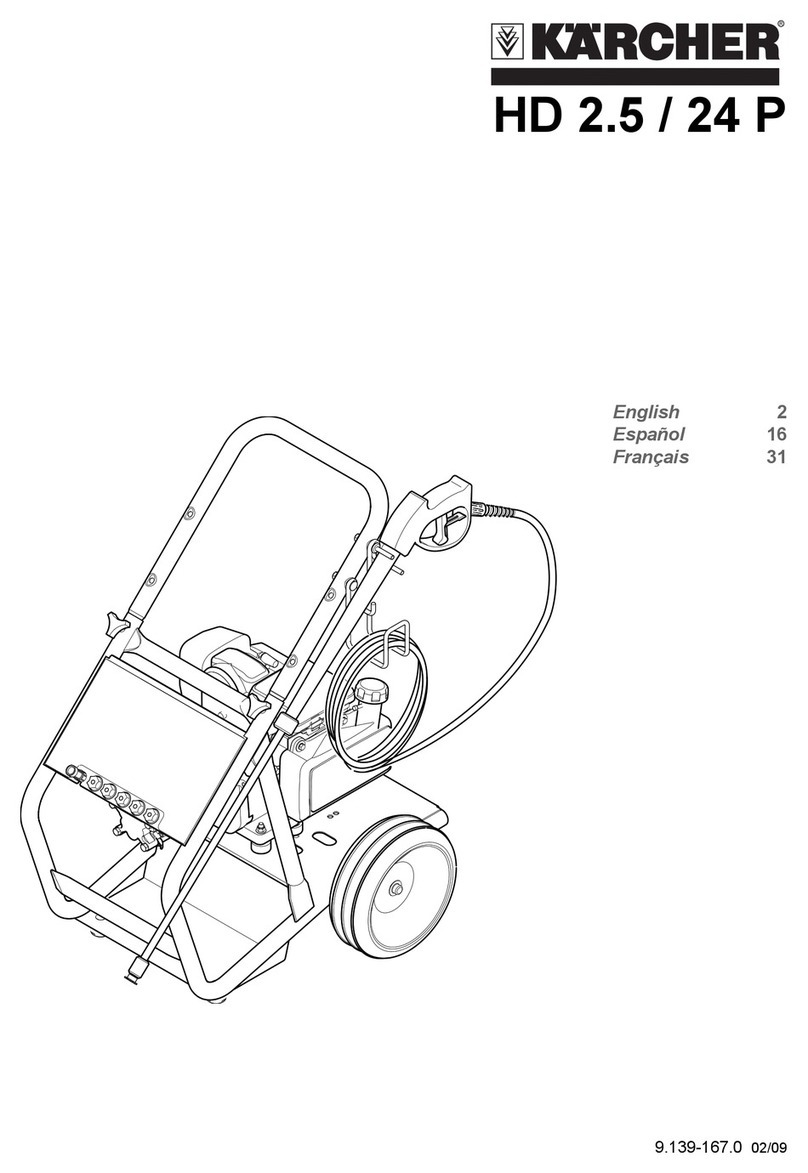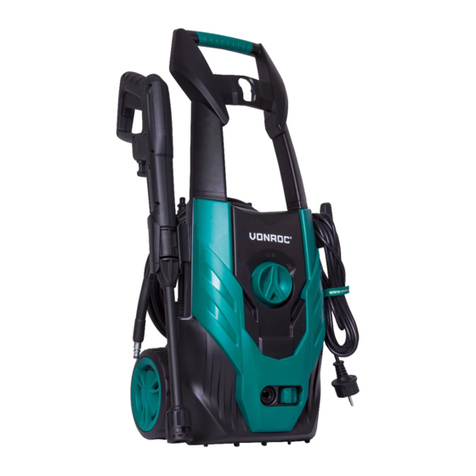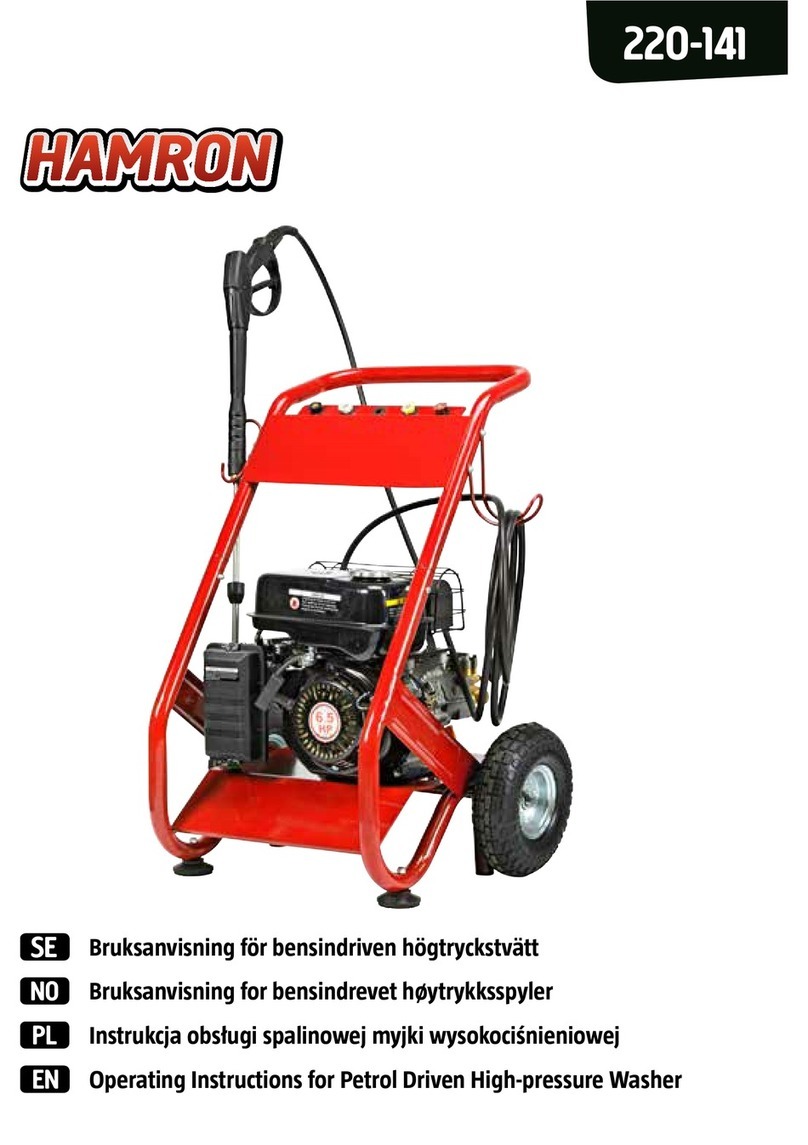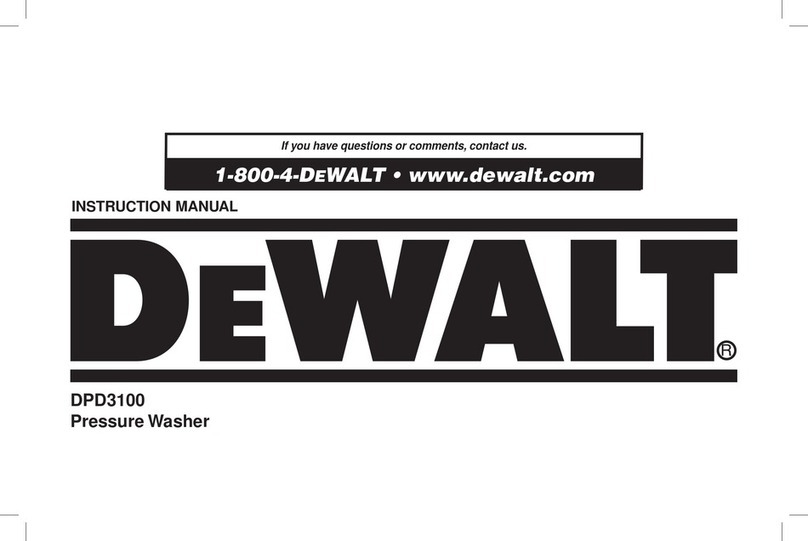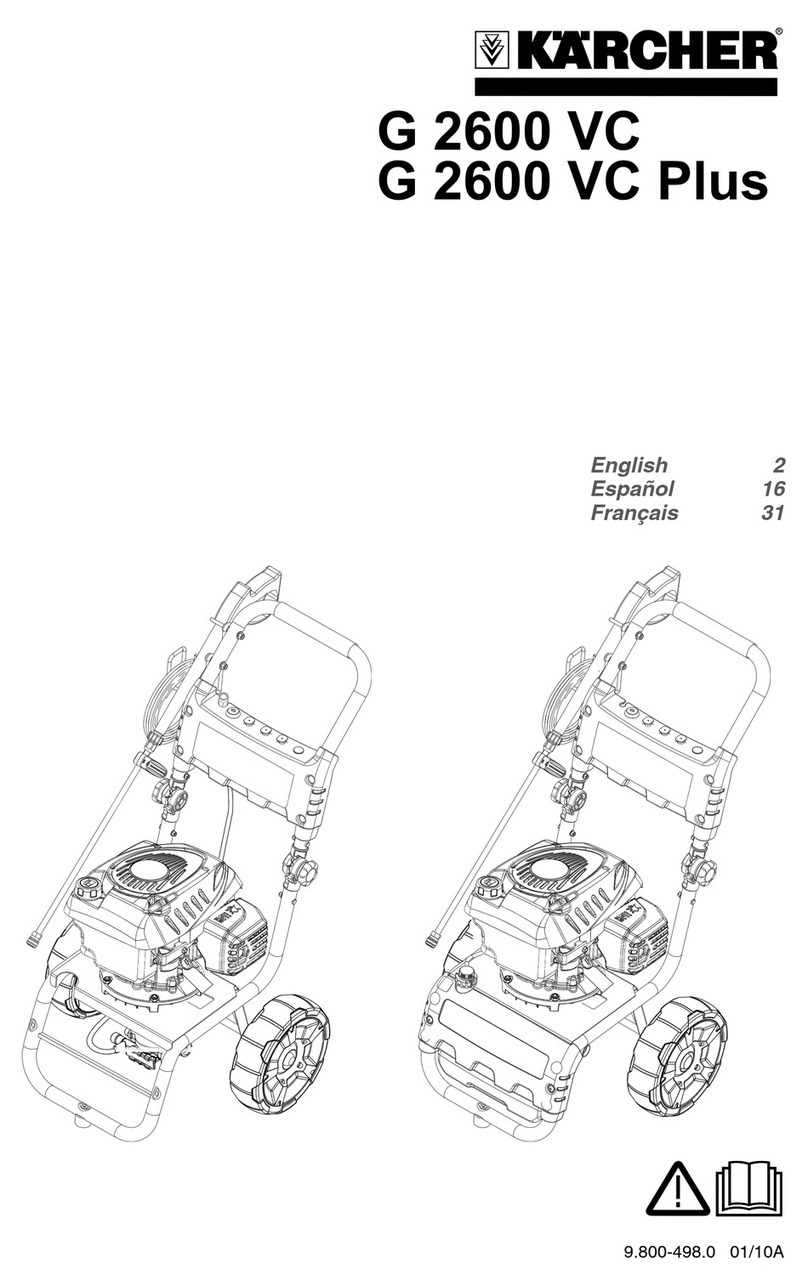
5
manufacturers instructions, any modifications or accessories added to this
machine should be assessed for safe operation and vibration, then implement
appropriate measures.
3.6 Accessories
Switch off machine and relieve lance pressure before attaching or removing
accessories.
Warning: Check accessory equipment is of the correct specification be-
fore attaching and operating. Serious personal injury, death or damage to
the machine could occur if this is not carried out. If in doubt contact your
dealer
Always refit auxiliary outlet blanking plugs after removing accessories and
before starting machine. (Check blanking plugs are securely located before
starting machine). (TWIN OUTLET VERSIONS ONLY)
Extra safety considerations should be given when operating with two people.
Always assess your working environment and consider your working col-
league.
If you have any doubts about your fitness to operate this equipment, seek
professional advice before proceeding.
* Note: Goggles or Full Face Protection.
The wearing of eye and face protection in hazardous areas is a requirement under regulation
4 of the personal protective equipment at work regulations 1992.
Regulation 4 requires employers to provide suitable personal protective equipment to
employees who may be exposed to risks affecting their health and safety.
Full Face Protection.
High speed flying partials or chemical splashes are rarely aimed directly at the eyes. A full face
visor offers the maximum protection in extreme conditions. Full face shields offer a wide area of
protection and because of the all round ventilation, remain mist free even in wide temperatures
swings.
Chemical Splash.
Chemical splashes and vapours can hit you from all sides. It’s important that full eye
enclosure is selected, e.g. Unvented goggles. Full face shields will also protect the whole
face from liquid splashes. Those with chin guards should be selected where there is a
danger of splash deflecting up from work surfaces.
Impact.
Impact hazards are caused by fast moving particles from the cleaning operation. The
potential impact speed must be assessed before selecting the most appropriate protection. Safety
glasses could be dislodged by high velocity impacts, in which case goggles or face shield should
be selected.
** Note: Ear Muffs or Ear Plugs.
The noise at work regulations require that from February 2006 persons working in noise
levels between 80dBA and 85dBA must be provided with suitable hearing protection on
request. If noise levels are above 85dBA then hearing protection must be supplied and worn.
Personal Protective Equipment Guide



